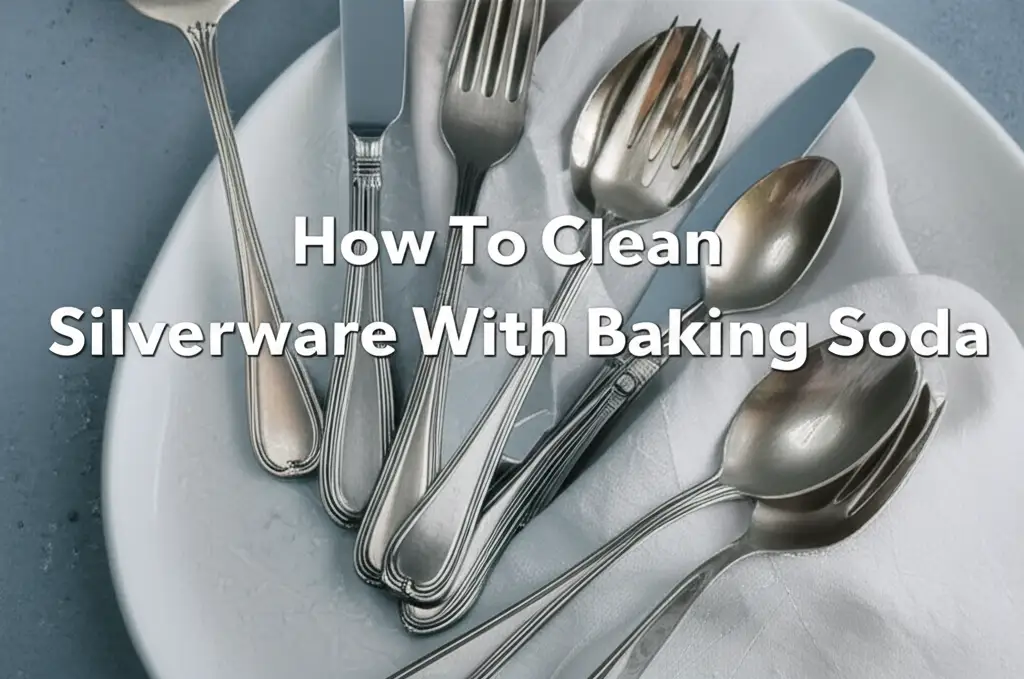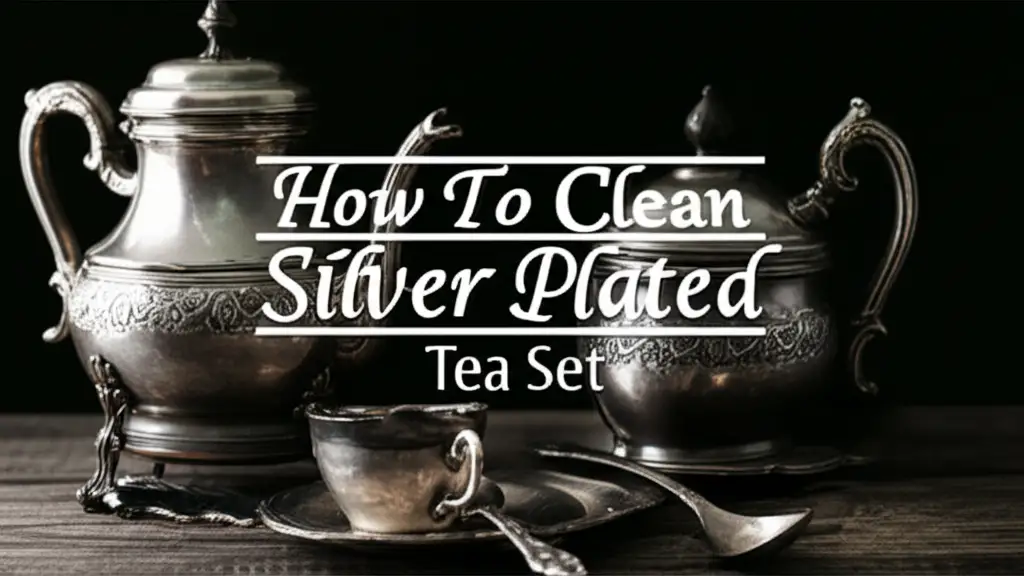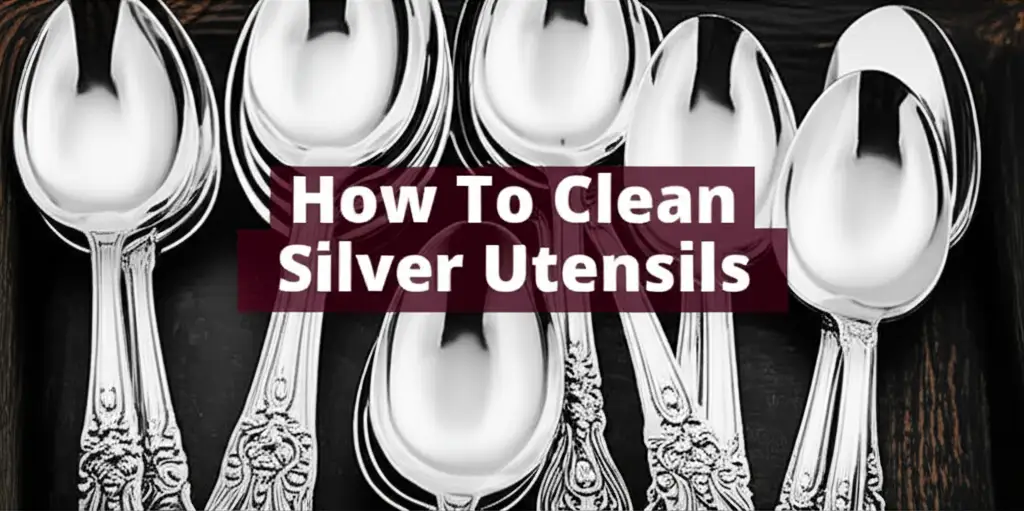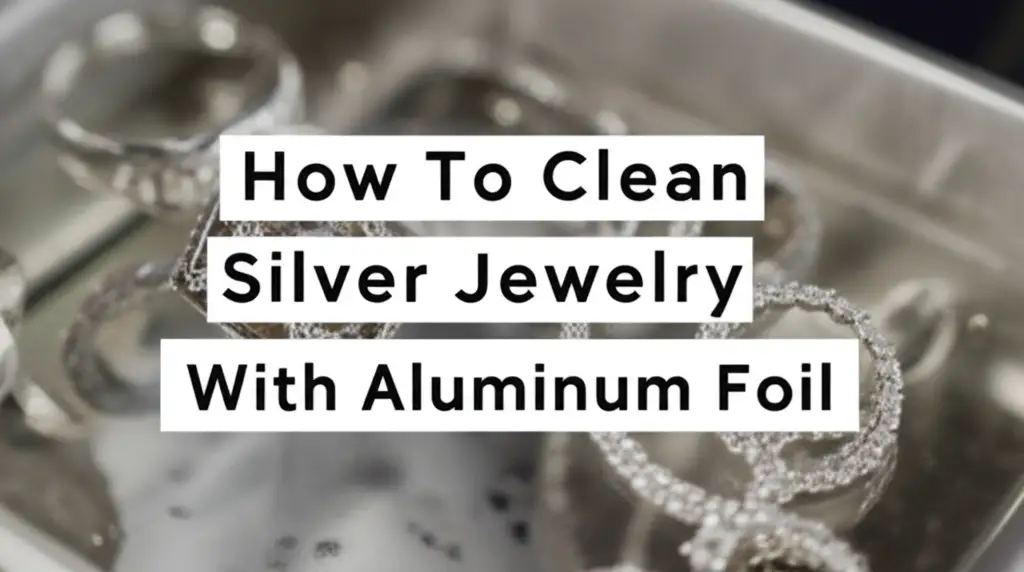· Home Cleaning · 13 min read
Clean Your Silver Tray - A Simple Guide to Restoring Shine
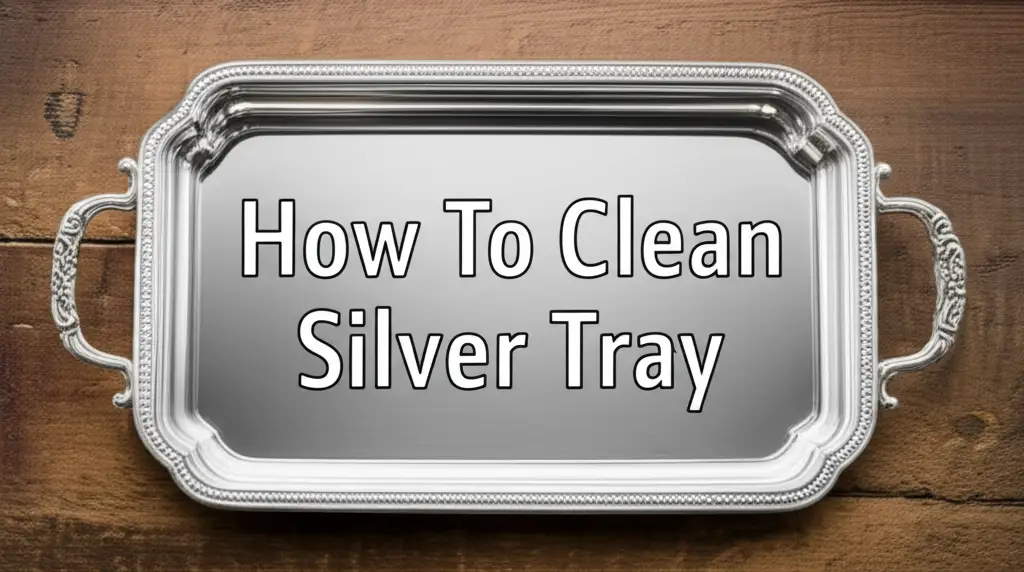
Clean Your Silver Tray: A Simple Guide to Restoring Shine
Do you have a beautiful silver tray losing its sparkle? Tarnish can make your silver look dull and old. You want to bring back its original shine. Learning how to clean a silver tray properly is easy. This guide provides effective methods and tips.
We will cover why silver tarnishes and what supplies you need. You will learn gentle cleaning methods for light tarnish. We will also explore powerful homemade solutions for deeper stains. Finally, we will discuss how to prevent tarnish and keep your tray shiny for a long time. Get ready to make your silver tray sparkle again.
Takeaway
To clean your silver tray and restore its shine:
- Understand why tarnish forms on silver.
- Always gather the right cleaning tools first.
- Use gentle soap and water for light tarnish.
- Apply homemade methods like baking soda and foil for stubborn tarnish.
- Consider commercial polishes for specific needs.
- Treat silver-plated items with extra care.
- Store your silver properly to prevent future tarnish.
How to clean a silver tray? To clean a silver tray, start with mild soap and warm water for light tarnish. For heavier tarnish, use methods like baking soda and aluminum foil, or a gentle commercial polish. Always dry the tray completely with a soft cloth to prevent water spots and new tarnish.
Understanding Silver Tarnish: Why Your Tray Loses Shine
You notice your silver tray has lost its bright gleam. A dark, dull film now covers its surface. This film is tarnish. Tarnish happens when silver reacts with sulfur in the air.
Air contains tiny amounts of hydrogen sulfide. This gas causes silver to darken over time. Humidity speeds up this process. Certain foods also make silver tarnish faster. Eggs, onions, and rubber items are common culprits. They contain sulfur compounds.
Tarnish is a surface corrosion. It does not mean your silver is ruined. It is a natural process. Cleaning removes this layer. This reveals the bright silver underneath. Knowing this helps you choose the right cleaning method.
Some trays are solid silver, like sterling silver. Others are silver-plated. Silver-plated items have a thin layer of silver over a base metal. This layer is delicate. Cleaning silver-plated items needs more care. You do not want to rub away the silver layer. Understanding your tray’s type helps protect it. Regular, gentle cleaning keeps tarnish at bay. You prevent it from building up too much. For heavily tarnished items, more robust methods are necessary. You can learn specific techniques for these situations. How to clean heavily tarnished silver offers good guidance.
Gathering Your Cleaning Essentials: Tools and Supplies
Before you begin cleaning your silver tray, you need the right tools. Having everything ready makes the process easy. You will avoid interruptions. A few simple items are often all you need.
First, you need several soft cloths. Microfiber cloths work very well. Old cotton T-shirts or flannel are also good choices. Make sure they are clean and lint-free. You do not want to scratch your silver. Avoid rough cloths or sponges. These can damage the surface.
Next, you will need mild dish soap. Use a gentle, phosphate-free soap. Warm water is also important. You will use it for rinsing and soaking. A soft-bristled brush, like an old toothbrush, can reach small crevices. This helps clean decorative parts of your tray.
Consider wearing gloves. Cotton gloves protect your hands. They also prevent natural oils from your skin from leaving new marks on the clean silver. These oils can cause new tarnish. Finally, you might want a silver polishing cloth or a commercial silver polish. These products are made specifically for silver. They provide a high shine. Gather all your items in one place. You will be ready to start.
Gentle Cleaning for Light Tarnish: The Soap and Water Method
For silver trays with light tarnish, a simple soap and water wash often works wonders. This method is gentle and safe for most silver items. I use this approach for my own serving trays after each use. It removes food residues and light discoloration. This prevents tarnish from becoming severe.
First, fill a basin with warm water. Add a few drops of mild dish soap. You do not need too much. Swish the water around to create some suds. Carefully place your silver tray into the soapy water. Let it soak for a few minutes. This helps loosen any dirt or grime.
After a short soak, use a soft cloth to gently wipe the tray. Work in small circular motions. Pay attention to any areas with visible tarnish. For intricate designs, use a soft brush. An old, soft toothbrush works well for this. Gently scrub the nooks and crannies. Do not apply too much pressure. You want to clean, not scratch. Once you have wiped the entire surface, rinse the tray thoroughly under warm, running water. Ensure all soap residue is gone. Soap can leave a dull film if not fully rinsed.
Drying is a very important step. Use a clean, soft, lint-free cloth. Polish the tray dry immediately. Do not let it air dry. Air drying causes water spots. These spots look like new tarnish. Buff the surface gently until it shines. This simple method keeps your silver looking its best. It is a great first step before trying stronger methods. For similar gentle care, learn how to clean silver utensils with soap and water.
Homemade Solutions for Deeper Tarnish: DIY Silver Cleaning
Sometimes, light tarnish needs a stronger approach. You can use common household items to create effective silver cleaners. These methods involve a chemical reaction. This reaction helps remove stubborn tarnish. I often turn to these DIY solutions for heavily tarnished pieces. They save a trip to the store and work very well.
Aluminum Foil and Baking Soda Method
This method is a favorite for many. It is effective and uses non-toxic ingredients. You need aluminum foil, baking soda, salt, and hot water. First, line a large bowl or a sink with aluminum foil, shiny side up. Place your silver tray on top of the foil. Sprinkle a generous amount of baking soda over the tray. Use about 1/4 cup for a medium tray. Add a tablespoon of salt. Now, pour hot (not boiling) water over the tray until it is fully submerged. You will see bubbles and a slight sulfur smell. This is the chemical reaction working. The tarnish moves from the silver to the foil. Let the tray sit for 10-15 minutes. For very heavy tarnish, you can leave it longer. Then, remove the tray. Rinse it under warm water. Dry and buff it with a soft cloth. This method works well for many silver items. Discover more about how to clean silver jewelry with aluminum foil and how to clean a silver necklace with baking soda.
Toothpaste Method
Toothpaste can also clean silver effectively. This method is good for small, specific areas of tarnish. You need a plain white toothpaste. Do not use gel toothpaste or one with scrubbing particles. Those can scratch your silver. Apply a small amount of toothpaste to a soft cloth. Gently rub the tarnished areas of the tray. Use light pressure. As you rub, the tarnish will start to lift. Once the tarnish is gone, rinse the tray well under warm water. Make sure no toothpaste residue remains. Then, dry it immediately with a clean, soft cloth. This method is quick for minor touch-ups. Learn more about how to clean sterling silver with toothpaste.
Salt Method
The salt method is similar to the baking soda and foil method. You can use salt as an electrolyte. This helps remove tarnish. Combine warm water with salt in a non-metal bowl. The ratio is about one tablespoon of salt per cup of water. Submerge your silver tray in the solution. Let it soak for a few hours or overnight for stubborn tarnish. The salt reacts with the tarnish. It helps to loosen it. After soaking, remove the tray. Rinse it thoroughly with clean water. Dry it completely with a soft cloth. This method is gentle and effective. It removes dullness. You can find more details on how to clean silver jewelry with salt.
Always test any homemade solution on a small, hidden spot first. This ensures it does not harm your tray. These DIY methods are powerful. They bring back the shine to deeply tarnished silver.
Using Commercial Silver Polishes: When to Choose Them
Sometimes, a commercial silver polish is the best option. These products are formulated to specifically remove tarnish. They often contain mild abrasives or chemicals that lift the tarnish quickly. I use them when my tray needs a very bright, consistent shine. Or if the tarnish is simply too tough for homemade solutions.
You find commercial polishes in various forms. Creams, liquids, and impregnated cloths are common. Creams and liquids are good for larger surfaces like trays. They allow you to cover more area evenly. Polishing cloths are great for quick touch-ups or maintaining shine after cleaning. Always read the product label. It provides specific instructions.
To use a commercial polish, apply a small amount to a clean, soft cloth. Work it onto the silver tray in small sections. Rub in a gentle, circular motion. You will see the tarnish darken on your cloth. This means it is working. Continue rubbing until the tarnish is gone and the silver looks bright. For areas with intricate details, use a cotton swab. It reaches into tiny grooves.
After polishing, buff the tray with a separate clean, soft cloth. This removes any polish residue and brings out the luster. Some polishes require rinsing with water after application. Always follow the product’s directions for rinsing and drying. Make sure to dry the tray completely. Any moisture can lead to new tarnish. Commercial polishes are effective. They restore a brilliant shine. They can be a valuable tool in your silver cleaning routine.
Caring for Silver-Plated Trays: Special Considerations
Cleaning a silver-plated tray requires extra care compared to solid silver. Silver-plated items have a thin layer of silver over another metal, like copper or brass. This layer is delicate. It can wear away with abrasive cleaning or harsh chemicals. I always treat my silver-plated items very gently. You want to preserve that precious silver coating.
First, identify if your tray is silver-plated. Look for marks like “EPNS” (Electro-Plated Nickel Silver) or “silver plate.” Sometimes, you see no marks, but the item feels lighter than solid silver. When cleaning, avoid any abrasive materials. Do not use harsh scrubbing pads or powders. These scratch the thin silver layer. Once the silver layer is gone, the base metal shows through. This cannot be easily repaired at home.
Use only the gentlest cleaning methods for silver-plated trays. Mild dish soap and warm water are always a safe starting point. As mentioned before, soak the tray. Then gently wipe it with a very soft cloth. Rinse and dry it immediately. You must ensure no moisture stays on the surface. For light tarnish, this method works well.
For slightly heavier tarnish on silver-plated items, the aluminum foil and baking soda method can be used with caution. It is a non-abrasive chemical reaction. However, limit the soaking time. Check the tray often. Do not let it sit for too long. Avoid aggressive rubbing even with this method. Commercial polishes for silver-plated items are also available. Ensure the product states it is safe for silver plate. They are usually less abrasive than polishes for sterling silver. Always buff with a very soft, clean cloth. Your goal is to restore shine without rubbing away the plating. Caring for silver-plated items correctly helps them last longer. They continue to look beautiful. You can learn more about caring for similar items by reading how to clean silver-plated flatware and how to clean a silver-plated tea set.
Preventing Tarnish and Maintaining Your Silver Tray’s Luster
Cleaning your silver tray is one part of the job. Preventing tarnish from forming is equally important. You can keep your silver looking beautiful for much longer with simple care. I follow these steps to reduce the need for deep cleaning. This saves time and protects my silver items.
Proper storage is key. Air exposure is the main cause of tarnish. Store your silver tray in a low-humidity environment. Avoid storing it in areas like basements or attics. These places often have high moisture. Wrap your silver tray in anti-tarnish cloth or flannel bags. These materials help absorb sulfur gases. You can also place silica gel packets near your silver. They absorb moisture. Airtight plastic bags or containers also protect silver very well. Remove as much air as possible before sealing them.
Limit exposure to certain substances. Food residue, especially from eggs, onions, or acidic fruits, speeds up tarnish. Always wash your silver tray soon after use. Do not let food sit on it for long periods. Rubber also contains sulfur. Avoid storing silver with rubber bands or rubber mats. Even newspaper can cause tarnish due to its acidity.
Regular dusting and light polishing help maintain shine. Gently wipe your tray with a soft cloth weekly. This removes dust and any new, light tarnish before it builds up. Use cotton gloves when handling your silver. Your skin’s natural oils can transfer to the surface. These oils can cause fingerprints and eventual tarnish spots. By taking these simple steps, you extend the life of your silver’s shine. You keep your tray looking display-ready with less effort.
FAQ Section
How often should I clean my silver tray?
The cleaning frequency depends on use and environment. If you use your tray often, clean it after each use with mild soap and water. For display pieces, check them monthly. Clean them when you notice any dullness or light tarnish. Regular light cleaning prevents heavy tarnish buildup.
Can I use abrasive cleaners on my silver tray?
No, you should never use abrasive cleaners on a silver tray. Abrasive cleaners or harsh scrubbing pads can scratch the silver surface. This removes the shine and creates permanent damage. They are especially harmful to silver-plated items. Always choose soft cloths and gentle cleaning solutions.
Is it safe to put a silver tray in the dishwasher?
No, putting a silver tray in the dishwasher is not safe. Dishwasher detergents are too harsh for silver. They contain chemicals that can cause severe tarnish or permanent damage. The high heat from the dishwasher can also harm silver. Always wash silver by hand.
What is the best way to store a silver tray?
Store your silver tray in a cool, dry place. Wrap it in anti-tarnish cloth or flannel bags. These materials absorb harmful gases. You can also use airtight plastic bags to reduce air exposure. Adding silica gel packets helps control humidity. Proper storage prevents tarnish.
How do I know if my tray is sterling silver or silver-plated?
Look for hallmarks or stamps on the tray. Sterling silver often has “925” or “sterling” marks. Silver-plated items may have “EPNS,” “silver plate,” or no mark at all. Sterling silver feels heavier and has a deeper luster. Silver-plated items might show wear on edges, revealing the base metal.
Conclusion
Your silver tray holds value and memories. It adds elegance to your home. Keeping it clean helps maintain its beauty and worth. We explored many ways to clean your silver tray. You learned about understanding tarnish and gathering the right supplies. Gentle soap and water work for light tarnish. Homemade solutions like baking soda with aluminum foil tackle deeper stains. Commercial polishes offer another effective option. Remember to give extra care to silver-plated trays.
The best approach combines cleaning and prevention. Store your silver properly. Avoid contact with harmful substances. Clean it gently and regularly. You now have the knowledge to make your silver tray shine. You can keep it looking its best for years to come. Start cleaning your silver tray today and enjoy its renewed brilliance.
- silver cleaning
- silver tray
- tarnish removal
- restore shine
- silver care
- DIY cleaning
- antique silver

